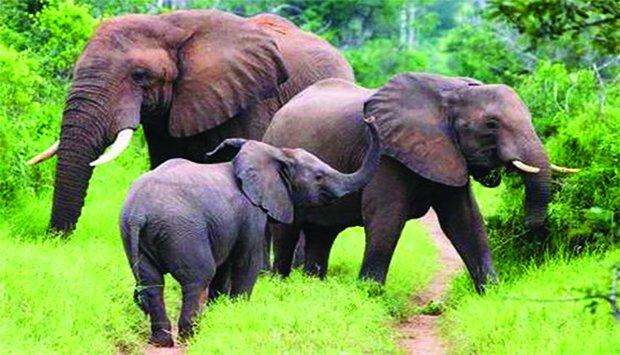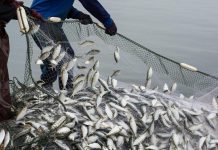Africa-Press – Angola. The exploitation of biodiversity resources in an unsustainable or uncontrolled way, with emphasis on the cutting of trees, indiscriminate slaughter of animals, has contributed to the rampant degradation of fauna and flora. As a result, wildlife is increasingly threatened.
In an interview, in reference to World Wildlife Day, which is being marked today, the director of the National Institute for Biodiversity and Conservation (INBC), Albertina Nzuzi, acknowledged that, despite great efforts to conserve the species wild, these are still under severe threats.
The director said that there is a weak recovery that is seen, above all, in those large species, which are easier to observe and more vulnerable to human activities, such as the elephant, hippopotamus and crocodile.
He stressed that the frequency of human/animal conflict events may be an indication of the growth of the animal population of large species. “These causes are associated with high rates of poverty and unemployment in the population, poor environmental awareness, presence of invasive species, human-animal conflict, scarce human, technical and financial resources available to meet the challenges of conservation and inspection”, he said. Albertina Nzuzi.
sustainable contribution
The contribution of plants and wild animals to the sustainable development and well-being of humanity is used for economic development, promoting the economic profitability of forests and fauna, as well as conservation areas, with a view to diversifying the sources of income. of a state.
In this context, the director of INBC called for the application of sustainable management policies. Therefore, she defended that the Angolan Conservation Areas, which offer a great concentration of biodiversity, rich in flora, fauna and rare species, must be protected for their sustainability.
According to the environmentalist, the fauna and flora play an important role in maintaining a healthy environment, allowing the provision of services necessary for the maintenance of human life, such as food, pollination and dispersion of plants, maintenance of population balance and control of pests.
He also highlighted the importance that animals have for maintaining balance in nature. “They are the ones who disperse seeds, plant trees, control populations of species that, when in excess, can be harmful to our crops (farms or livestock), and still produce important medicines for the cure of many diseases”.
dangers to wildlife
Based on these details, the director said that each small animal has its specific function in nature, and its absence causes incalculable damage to humanity. “The more threatened species there are, the greater the risk suffered by the environment in which these species are found, that is, there is a reduction in the quality of environmental resources, such as water, fertile soil, air and products from nature”, he clarified.
Angolan wildlife faces great dangers in view of the various human activities that interfere with efforts to conserve biodiversity, including poaching or placing snares at the main crossing points or watering points for animals, private breeding of domestic animals that, in certain cases, , mate with wild animals, causing them to hybridize, as in the case of donkeys with zebras in Iona National Park.
When it comes to indiscriminate slaughter, Albertina Nzuzi said that the killing of wild animals happens every day. She said that slaughtered animals can be found in markets or on public roads, where they are sold (fresh, dried or smoked meat).
“In terms of numbers, we cannot quantify, but to say that the situation is worrying”, he said, to advance that ” executive decrees 469/15 of 13 July, and 137/13, of 6 May, have been applied by the Defense and Security bodies, as well as by the Public Ministry, in collaboration with the Environment sector.
challenges in conservation
He said that there are several pressures that drive the significant change in biodiversity. With population growth and the development of industrial technological diffusion, environmental problems are increasingly evident.
And there are many pressures caused by deforestation, such as the increase in agricultural fields, since the local population still uses remote techniques, such as burning to prepare land in order to practice subsistence agriculture.
The harvesting of charcoal has also contributed to forest losses, as well as the production of wood for commercial and domestic use and the indiscriminate slaughter of animals, sold in large cities are some of the most striking examples of the influence exerted by human action.
On the other hand, land degradation causes the reduction and loss of biological and economic productivity of the soil. The illegal exploitation of mineral resources causes a considerable environmental impact, intensely alters the mined and neighboring areas, where the waste and decline deposits are made.
Biodiversity Strategy predicts good results
To reverse the situation, the country has carried out programs to raise awareness among the population in all spheres of society and contributed with scientific research to identify new endemic species, characterize the conservation status and knowledge of the distribution of flora.
According to the director of the INBC, around 34% of Angola’s birds are listed as endangered species, due to the degradation of their habitats. Several others are at risk of extinction, because of the pressure resulting from human action. “Reduced forest habitats, high rates of deforestation and uncontrolled fires can be a major risk factor.”
To deal with these situations, and in the context of fulfilling the obligations of the Convention on Biological Diversity, of which Angola is an integral party, the country, through the Ministry of Culture, Tourism and Environment (MCTA), has prepared and approved the Strategy National Biodiversity Plan and an Action Plan.
These important documents aim, during the period 2019-2025, to serve as guidelines that should guide actions for the conservation, preservation, protection and restoration of Angolan biodiversity.
This plan is based on the goals set by the Government, on the National Development Plan (PDN 2018-2022) and on the National Long-Term Strategy “Angola 2025”, with a strategic vision until 2025.
In this strategy, conservation responsibilities are distributed to all sectors and provinces that, directly or indirectly, deal with biodiversity resources.
This year’s World Wildlife Day is celebrated under the motto “Recovering key species for ecosystem restoration”, with a view to drawing attention to the critical role that key species (plants and animals) play in guaranteeing the health of the ecosystem, where many are threatened or in danger of extinction.
Endangered Species
Biodiversity is the variability of living organisms from all sources, including terrestrial, marine or other aquatic ecosystems and the ecological complexes of which they are a part. It is where all the activities carried out in rural areas take place, such as agriculture, livestock, artisanal fishing, cutting trees, gathering wild fruits, hunting, and other activities.
The director stressed that the country has drawn up the Red List of Species of Angola, which includes three extinct species, 29 threatened with extinction, 100 vulnerable and 18 invasive.
The most at risk species are, for the most part, large, protected species with the highest economic value of their components, such as elephant, gray parrot and chimpanzee (Grandes Simios).
“The value of these species makes them indiscriminately slaughtered in order to obtain an easy profit, resulting from the commercialization of their parts (horns, fins, skin, ivory, etc.).
Reducing the rate of loss of natural habitats, including forests, is still considered a challenge for the country, given that, on an annual average, around 106 thousand hectares of natural forests and 370 hectares of plantations are lost. That is, a deforestation rate of about 0.20 to 0.25 percent.
For More News And Analysis About Angola Follow Africa-Press






